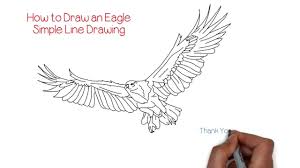Drawing:ktetjzdofvc= eagle is a fascinating challenge for artists due to the bird’s majestic and powerful appearance. Eagles symbolize freedom and strength, making them popular subjects for various art forms. Eagles are known for their sharp talons, large wings, and keen eyes, all of which require careful attention to detail when drawing. Understanding the anatomy of an eagle helps in capturing its essence accurately, which is crucial for creating a lifelike depiction.
To start drawing:ktetjzdofvc= eagle, you’ll need some essential materials. These include a set of pencils, ranging from hard (H) for light sketching to soft (B) for shading, quality drawing paper, an eraser for correcting mistakes, and possibly a ruler for ensuring symmetry. For those inclined towards digital art, a tablet and stylus can be great tools to mimic traditional drawing techniques while allowing for easy adjustments and refinements.
In addition to the basic tools, artists can benefit from using reference images or models. Observing real-life eagles or studying photographs can provide a better understanding of their posture, proportions, and intricate details, such as feather patterns. With the right preparation and resources, anyone can embark on the journey of drawing:ktetjzdofvc= eagle and successfully capture its regal beauty.
Step-by-Step Guide to drawing:ktetjzdofvc= eagle
Drawing:ktetjzdofvc= eagle involves a series of steps that allow you to gradually build up the bird’s form and details. Each step focuses on a different part of the eagle, helping you capture its majestic features accurately.
Step 1: Sketching the Eagle’s Head
The first step in drawing:ktetjzdofvc= eagle is to focus on the head, which is a defining feature of this majestic bird. Begin by sketching a simple outline of the eagle’s head, paying particular attention to the beak and eyes. The beak is curved and powerful, indicative of the eagle’s predatory nature. To capture its essence, draw a slightly hooked shape that tapers to a sharp point. The eyes are another crucial element, as they convey the bird’s keen sight. Draw a circle for the eye and add a smaller circle inside for the pupil. Shade the pupil to give it depth and a lifelike appearance.
When sketching the head, use light strokes to establish the basic shapes and proportions. This allows for easy adjustments as you refine your drawing. The feathers on the head should be drawn with short, curved lines to mimic the texture and direction of real feathers. As you progress, consider the positioning and size of the head in relation to the body, ensuring a balanced and realistic portrayal.
Step 2: Drawing the Body and Wings
Once the head is complete, it’s time to sketch the eagle’s body and wings. Begin by drawing an elongated oval shape for the body, ensuring it’s proportionate to the head. The wings are one of the most distinctive features of an eagle, often depicted in a spread position to convey flight. To draw the wings, extend curved lines from the shoulders and outline the primary feathers, which are the longest feathers on the wings (Easy Drawing Guides).
When detailing the wings, pay attention to the feather patterns. Eagles have layers of feathers that overlap, creating a textured appearance. Use a series of curved lines to represent these layers, and vary the length and thickness of the lines to add realism. The underside of the wings can be shaded lightly to indicate depth and dimension.
Step 3: Adding Details to the Wings
Adding details to the wings is crucial for capturing the eagle’s dynamic flight capabilities. Start by focusing on the primary feathers, which are the largest and most prominent. Drawing:ktetjzdofvc= eagle these feathers with long, sweeping lines that taper at the ends. Next, add the secondary feathers, which are shorter and located closer to the body. These can be drawn using shorter, overlapping lines (Easy Drawing Guides).
To enhance realism, incorporate varying textures and shading. Use cross-hatching techniques to indicate shadows and highlights, creating a sense of depth. The feathers near the wing tips can be drawn more loosely to suggest movement and fluidity. Observing reference images of eagles in flight can provide valuable insights into the natural arrangement of their feathers.
Step 4: Shaping the Talons and Legs
The talons and legs of an eagle are powerful and designed for grasping prey. Begin by sketching the legs with straight lines to represent the bones and curves to depict the muscular structure. The talons should be drawn as sharp, curved shapes at the end of each toe. Pay attention to the size and spacing of the talons, as they are essential for creating a realistic portrayal.
Drawing:ktetjzdofvc= eagle When detailing the legs, add scales and texture to mimic the eagle’s rugged appearance. Use small, repeated lines to create the texture of the scales, and vary the pressure of your pencil to add depth. The talons can be shaded to give them a polished, metallic look, emphasizing their strength and sharpness. Consider the positioning of the legs in relation to the body, ensuring they are proportionate and naturally aligned.
Advanced Techniques for Realism
Drawing:ktetjzdofvc= eagle To take your eagle drawing to the next level, you can employ advanced techniques that add realism and depth. Shading is one of the most effective ways to create a three-dimensional appearance. Use different grades of pencils, such as 2B or 4B, to achieve varying levels of darkness. Apply shading to areas where light naturally falls, such as the underside of the wings and the shadows cast by the head and talons.
Another technique is cross-hatching, which involves drawing intersecting lines to build up texture and tone. This can be used to create the illusion of feathers, adding a sense of movement and life to the drawing. Blending tools like tortillons or blending stumps can help soften harsh lines and transitions, resulting in a smoother, more natural look.
Incorporating these techniques requires practice and patience, but they can significantly enhance the overall quality of your eagle drawing. By understanding how light and shadow interact with the bird’s form, you can create an image that is both accurate and artistically compelling.
Common Mistakes and How to Avoid Them
Even experienced artists can encounter challenges when drawing eagles. One common mistake is proportional errors, such as drawing the head too large or the wings too small in relation to the body. To avoid this, take time to measure and compare each part of the eagle as you draw, using a ruler or proportional divider if necessary .
Drawing:ktetjzdofvc= eagle Another frequent issue is inconsistent detailing. While it’s important to focus on key areas like the head and wings, neglecting other parts can make the drawing appear unbalanced. Ensure that the level of detail is consistent throughout the piece, paying attention to areas like the legs and tail. Finally, avoid overworking the drawing, as excessive erasing and redrawing can lead to smudging and a loss of clarity .
Enhancing Your Eagle Drawing with Backgrounds
Drawing:ktetjzdofvc= eagle Adding a background to your eagle drawing can enhance the overall composition and provide context. Consider incorporating natural elements such as mountains, forests, or open skies to create a sense of environment. A well-chosen background can highlight the eagle’s majesty and add depth to the artwork.
Drawing:ktetjzdofvc= eagle Experiment with different background styles, from simple gradients to detailed landscapes, depending on your artistic goals and the mood you want to convey. Ensure that the background complements the eagle rather than overshadowing it, using color and shading to maintain balance and harmony.
Conclusion
Drawing:ktetjzdofvc= eagle is a rewarding artistic endeavor that challenges and hones your skills. By following the steps outlined in this guide, you can capture the essence of this majestic bird, from its powerful wings to its sharp talons. Remember, practice is key to improvement, and each drawing is an opportunity to learn and grow as an artist. Embrace the journey, and let your creativity soar!
Read More: drawing:skfktqthywc= dog







